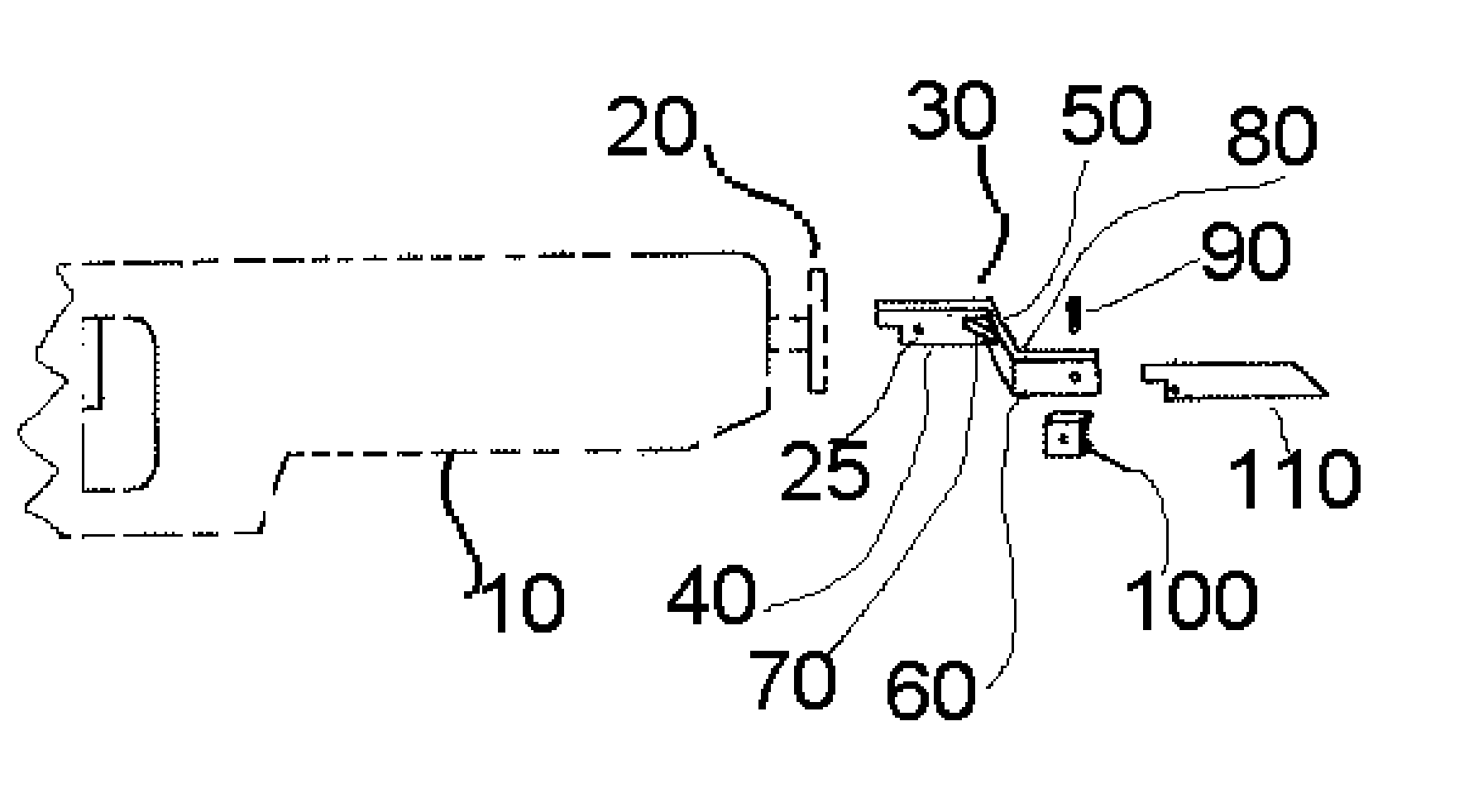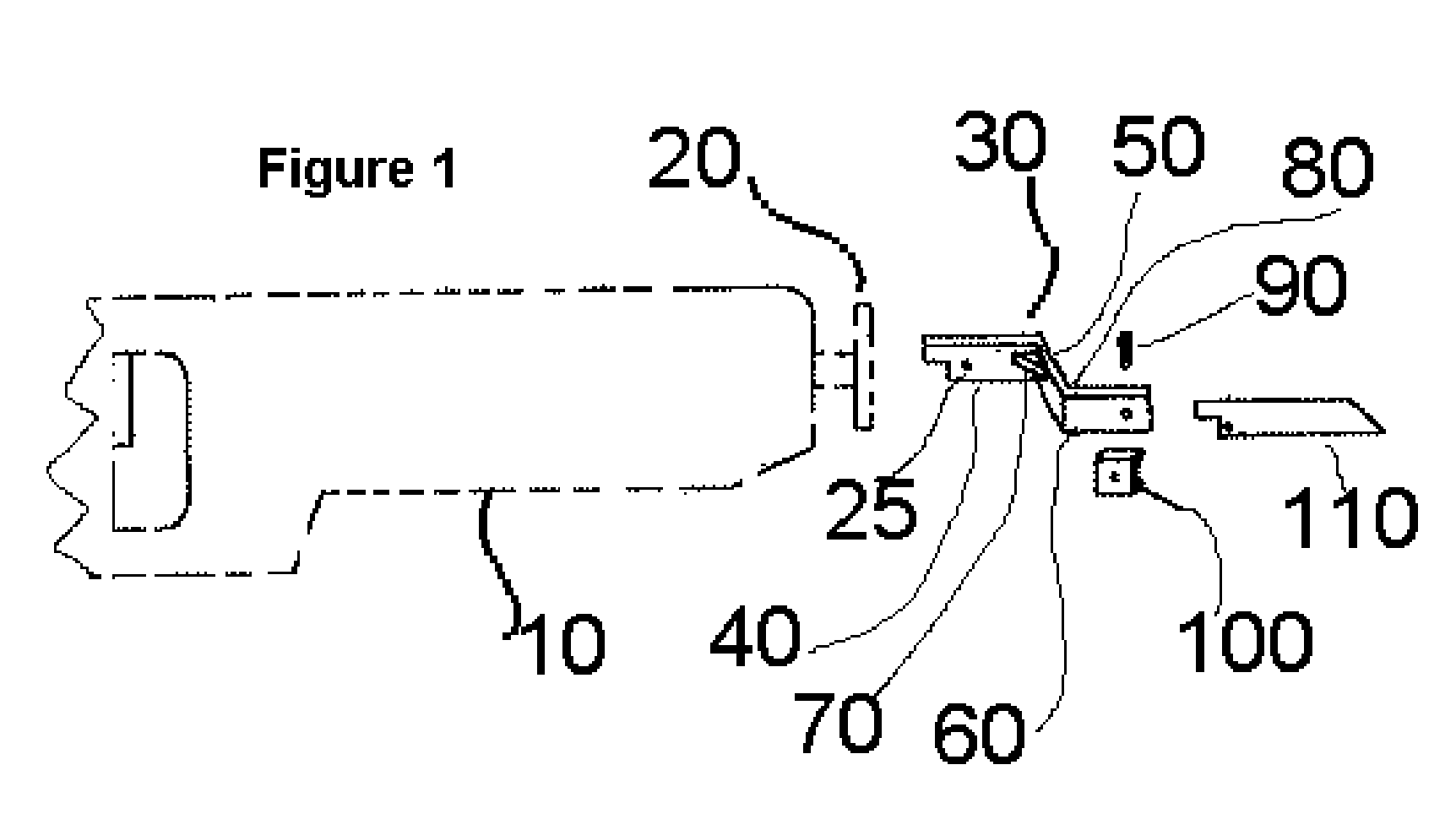Orbital reciprocating saw
a reciprocating saw and orbital technology, applied in the field of attachment of reciprocating tools, can solve the problems of user’s cutting accuracy, less control, and inability to easily do so with a reciprocating tool, and achieve the effect of quick interchang
- Summary
- Abstract
- Description
- Claims
- Application Information
AI Technical Summary
Benefits of technology
Problems solved by technology
Method used
Image
Examples
Embodiment Construction
[0021] As seen in the attached drawings, the present invention is designed to be used with any power driven saw (10) having a reciprocating drive member (20). The present invention has an offset adapter (30) made up of a first, second, and third metal planes (40, 50, 60), two angle braces (70, 80), a conventional set screw (90), preferably a conventional screw that can be tightened or loosened by user with hands, and a set screw receiving member (100).
[0022] The first straight metal plane (40) is designed to insert into the reciprocating drive member (20) and has the standard hole (25) used for locking any reciprocating saw blade into a reciprocating drive member (20). The second straight metal plane (50) is disposed anywhere from 90 degrees to 45 degrees from the first metal plane (40), and the second straight metal plane (50) is correspondingly attached to the third metal plane (60) anywhere from 90 degrees to 45 degrees from the third metal plane (60).
[0023] The first metal pla...
PUM
| Property | Measurement | Unit |
|---|---|---|
| angle | aaaaa | aaaaa |
| offset angle | aaaaa | aaaaa |
| area | aaaaa | aaaaa |
Abstract
Description
Claims
Application Information
 Login to View More
Login to View More - R&D
- Intellectual Property
- Life Sciences
- Materials
- Tech Scout
- Unparalleled Data Quality
- Higher Quality Content
- 60% Fewer Hallucinations
Browse by: Latest US Patents, China's latest patents, Technical Efficacy Thesaurus, Application Domain, Technology Topic, Popular Technical Reports.
© 2025 PatSnap. All rights reserved.Legal|Privacy policy|Modern Slavery Act Transparency Statement|Sitemap|About US| Contact US: help@patsnap.com



